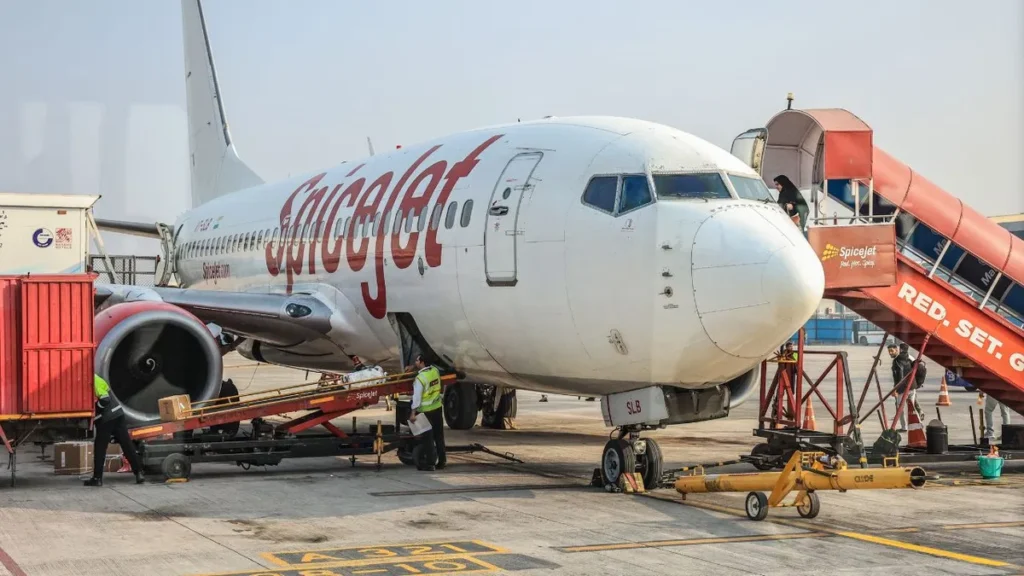
SpiceJet Share Price
The aviation sector in India has been a hotbed SpiceJet Share Price of activity in recent years, and one of the most discussed names in this space is SpiceJet. As one of the country’s leading low-cost airlines, SpiceJet has garnered attention not only for its operational strategies but also for its share price movements in the stock market. In this article, we will delve deep into the various factors that influence SpiceJet’s share price, analyze historical trends, and explore future outlooks. Whether you’re an investor, an aviation enthusiast, or just curious about the industry, there’s plenty to unpack.
Understanding SpiceJet: A Brief Overview
Company Background

Founded in 2005, SpiceJet has established itself as a key player in the Indian aviation SpiceJet Share Price SpiceJet Share Price sector. Initially starting as a budget airline, the company has expanded its services to include cargo operations, charter flights, and a range of other offerings. With a fleet that includes both Boeing and Bombardier aircraft, SpiceJet operates a variety of domestic and international routes.
The airline’s mission has always been to provide affordable travel options, thereby making air travel SpiceJet Share Price accessible to the masses. This focus on budget-conscious travel has allowed SpiceJet to build a loyal customer base. However, the airline has faced challenges, including fluctuating fuel prices, competition from other airlines, and economic downturns, all of which can influence its financial performance and, subsequently, SpiceJet Share Price its share price.
Operational Strategies
SpiceJet’s operational strategies have played a significant role in shaping its market position. SpiceJet Share Price The airline has consistently focused on optimizing costs, which is crucial for a low-cost carrier. This includes strategies such as leasing aircraft rather than purchasing them outright and maintaining a lean workforce. Additionally, SpiceJet has made investments in technology to enhance operational efficiency, from booking systems to in-flight services.
These operational choices have allowed the airline to remain competitive in a saturated market. SpiceJet Share Price However, they also come with risks, especially when it comes to customer satisfaction and operational reliability. If operational issues arise, they can have a direct impact on revenue and, in turn, on share price.
Factors Influencing SpiceJet Share Price
Market Dynamics
The stock price of SpiceJet is influenced by a variety of market dynamics. These include not SpiceJet Share Price only the airline’s own financial health but also broader market trends in the aviation industry. For example, fluctuations in fuel prices can significantly impact operational costs, leading to adjustments in ticket pricing and ultimately affecting revenue. When fuel prices rise, profit margins can shrink, which might lead to a decline in share price.
Furthermore, economic factors, such as GDP growth and disposable income levels, also play a vital role. In a booming economy, air travel demand typically increases, benefiting airlines. Conversely, during economic downturns, travel budgets are often among the first to be cut, negatively impacting revenues.
Regulatory Environment
The regulatory framework governing aviation in India also has a direct impact on SpiceJet’s SpiceJet Share Price share price. The Civil Aviation Ministry sets guidelines on various aspects, including fare caps and route allocations. Changes in these regulations can influence operational flexibility, potentially affecting profitability.
Additionally, issues such as safety regulations and environmental policies are increasingly coming into focus. Airlines, including SpiceJet, must invest in compliance, which can strain finances. These factors can create volatility in share prices as investors react to news regarding regulatory changes.
Competitor Landscape
The competitive landscape is another significant factor influencing SpiceJet’s share price. SpiceJet Share Price The airline operates in a highly competitive environment with other low-cost carriers like IndiGo and AirAsia India, as well as full-service airlines. Each competitor’s performance, strategies, and market share can directly impact investor sentiment towards SpiceJet.
For instance, if a competitor announces a new route or lower fares, it could pressure SpiceJet to respond, which might affect its pricing strategy and profitability. Keeping a close eye on competitors can provide valuable insights into potential share price movements.
Historical Share Price Trends
Initial Public Offering and Early Years
SpiceJet’s journey on the stock market began with its initial public offering (IPO) in 2010. SpiceJet Share Price The stock initially garnered attention for its ambitious growth plans and potential to capture a significant share of the market. During its early years, SpiceJet’s stock price experienced considerable fluctuations, often reflecting broader market trends and investor sentiment.
In the years following its IPO, SpiceJet faced numerous challenges, including financial losses and operational hurdles. These difficulties led to volatility in share prices, as investors reacted to quarterly earnings reports and operational announcements.
Recent Performance and Volatility
In recent years, SpiceJet’s share price has experienced notable volatility, primarily driven by external factors such as the COVID-19 pandemic. The pandemic significantly disrupted air travel globally, leading to plummeting revenues for airlines. SpiceJet was no exception, and its share price reflected the harsh realities of the aviation sector during this period.
However, as travel restrictions eased and demand for air travel rebounded, SpiceJet’s share price saw a resurgence. Investors became optimistic about the recovery of the travel industry, pushing the stock price higher. This recovery has been accompanied by fluctuations, as the market adjusts to new realities and investor expectations.
Impact of Events and News
Significant events and announcements can have an immediate effect on SpiceJet’s share price. For example, news about fleet expansion, new route launches, or partnerships can create positive momentum. Conversely, any negative news, such as safety incidents or regulatory fines, can lead to a swift decline in share prices.
The market’s reaction to news can often be exaggerated, reflecting the emotional responses of investors. For those tracking SpiceJet’s stock, staying informed about industry developments and company announcements is crucial for anticipating potential price movements.
Investment Considerations for SpiceJet Shares
Risk Assessment
Investing in SpiceJet shares, like any other equity investment, comes with its own set of risks. Given the volatile nature of the airline industry, investors must carefully consider the risks involved. These include operational risks, market competition, and external factors such as fuel price fluctuations and geopolitical events.
Furthermore, the regulatory landscape can pose risks that investors need to be aware of. Changes in government policies or economic conditions can directly impact the airline’s profitability and, by extension, its share price. Conducting thorough research and understanding these risks is essential for making informed investment decisions.
Financial Performance
Analyzing SpiceJet’s financial performance is crucial for prospective investors. Key metrics to consider include revenue growth, profit margins, and cash flow. Investors should also examine quarterly earnings reports to gain insights into the company’s operational efficiency and profitability trends.
Additionally, comparing SpiceJet’s performance to industry benchmarks and competitors can provide a clearer picture of its market position. This analysis helps investors assess whether the current share price reflects the airline’s financial health and growth potential.
Long-Term Outlook
The long-term outlook for SpiceJet will largely depend on its ability to adapt to market changes and consumer preferences. As the aviation industry evolves, so too must the strategies employed by airlines. SpiceJet’s focus on cost efficiency and customer service will be pivotal in determining its market position moving forward.
Investors should keep an eye on trends in air travel, such as the growing demand for sustainable travel options and advancements in technology. The airline’s ability to innovate and respond to changing consumer expectations will play a crucial role in shaping its future success.
SpiceJet’s Position in the Aviation Market
Competitive Advantages
SpiceJet has several competitive advantages that could bolster its share price in the long run. One of the most notable is its strong brand recognition within the low-cost segment. By positioning itself as a reliable and affordable airline, SpiceJet has cultivated a loyal customer base.
Moreover, the airline’s operational strategies, including efficient fleet management and route optimization, give it an edge in managing costs. These advantages allow SpiceJet to remain competitive against both low-cost and full-service carriers.
Challenges Ahead
Despite its advantages, SpiceJet faces significant challenges that could affect its share price. The competitive landscape is ever-evolving, and the entry of new players or aggressive pricing strategies from competitors could pressure profit margins.
Additionally, external factors like rising fuel costs and regulatory changes pose ongoing SpiceJet Share Price risks. The airline industry is also sensitive to global events such as pandemics or economic downturns, which can quickly alter travel demand.
Future Growth Opportunities
Looking ahead, there are several growth opportunities for SpiceJet that could positively impact its share price. The rising middle class in India is expected to fuel demand for air travel, presenting a substantial opportunity for expansion.
Furthermore, diversifying its services to include more cargo operations could provide additional revenue streams. The growth of e-commerce has increased demand for cargo services, and SpiceJet’s ability to capitalize on this trend could enhance its profitability.
Technical Analysis of SpiceJet Share Price
Price Movements and Trends
Understanding the technical aspects of SpiceJet’s share price movements can provide valuable SpiceJet Share Price insights for investors. Analyzing price charts, patterns, and trends can help identify potential entry and exit points. Investors often look for patterns such as head-and-shoulders, double tops, or moving averages to make informed decisions.
In recent years, SpiceJet’s stock has shown both bullish and bearish trends, reflecting the broader market dynamics. Recognizing these patterns can help investors gauge market sentiment and make strategic investment choices.
Support and Resistance Levels
Identifying support and resistance levels is crucial for technical analysis. Support levels indicate SpiceJet Share Price where the stock price tends to find buying interest, while resistance levels show where selling pressure may arise. For SpiceJet, these levels can fluctuate based on market conditions, investor sentiment, and external news.
By tracking these levels, investors can set realistic price targets and manage their risk effectively. This analysis is especially important for traders looking to capitalize on short-term price movements.
Volume Analysis
Volume analysis is another important aspect of technical analysis. It measures the number SpiceJet Share Price of shares traded during a specific period and can provide insights into market strength. High volume during price increases often indicates strong buying interest, while high volume during price declines may signal selling pressure.
For SpiceJet, analyzing trading volumes can help investors assess market trends and







